How to Plant Walnut Trees
In this article, we will explain how to plant walnut trees. We start with field preparation, digging the holes and finally planting the trees. In the last section, we give some tips on what you can do to protect the trees after planting.
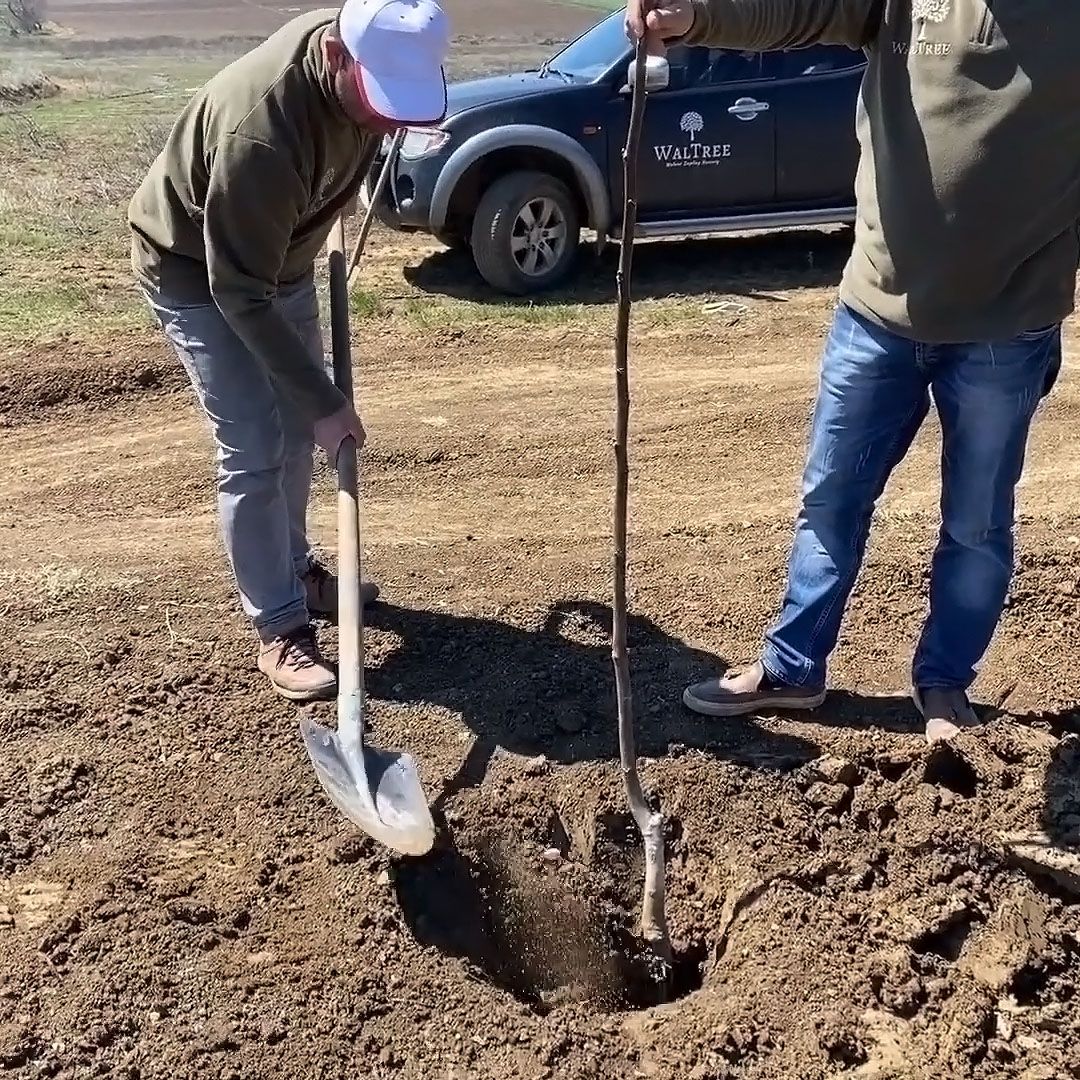
Before Trees Arrive
Field Preparation
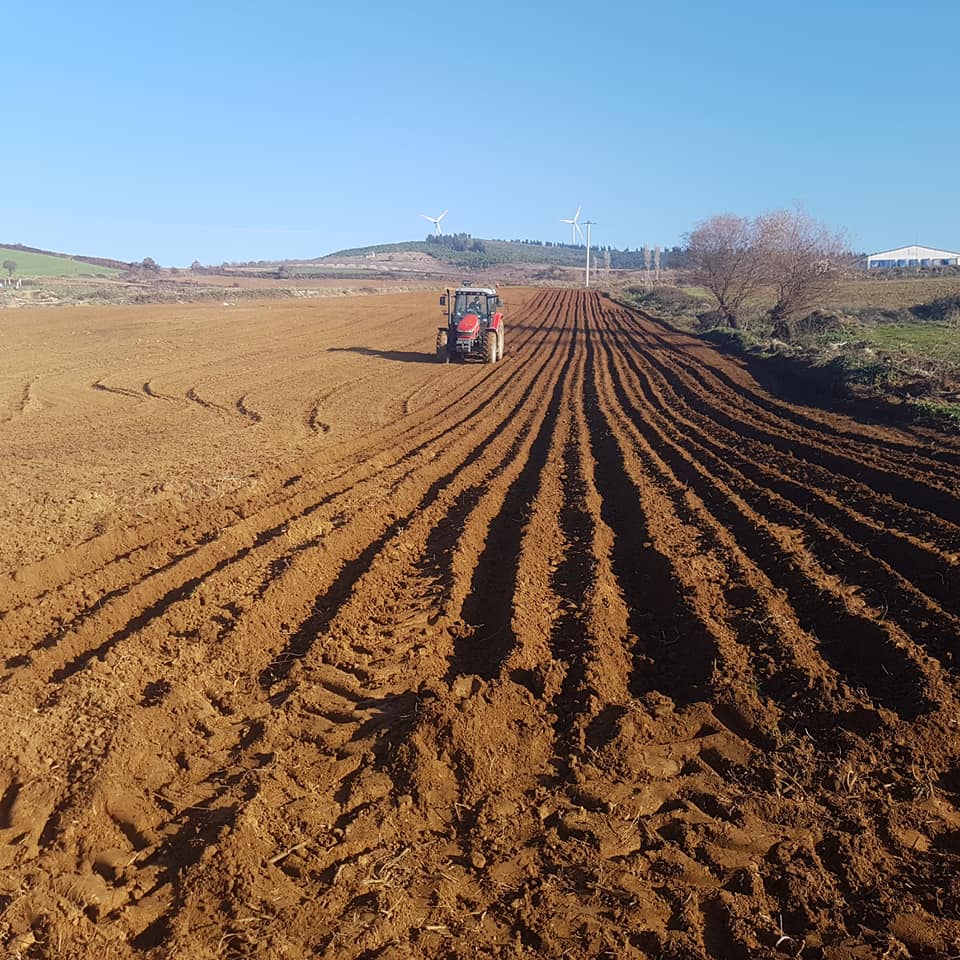
Your field needs to be in the best possible condition when your trees arrive.
You need to plow your field a few weeks before receiving the trees. This will break hard compacted soil and make it easier to dig holes and plant the trees. It will also bring more air into the soil.
Another important preparation step is clearing the weeds. Trees require water and nutrients to grow well. Grasses and weeds can take these two important elements from the soil. This can slow the growth of your trees. You can use herbicides to eliminate weeds.
For the details of how to plow the field and clear the weeds, you can read our article about field preparation.
Digging the holes
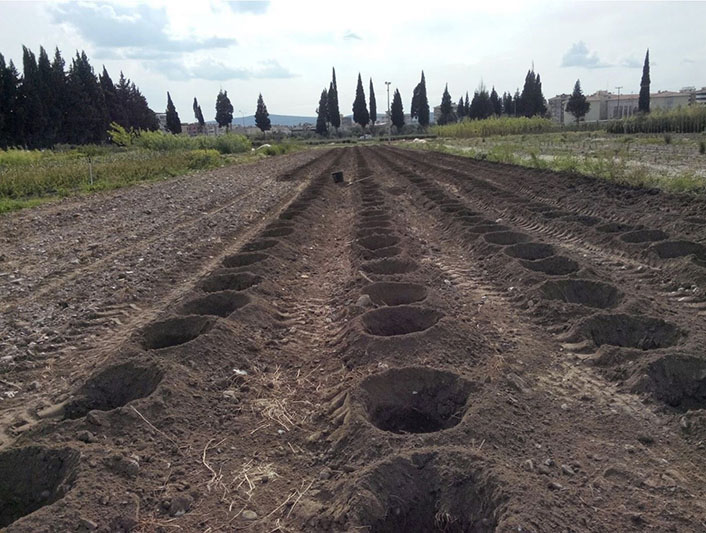
It is best to dig the planting holes before you receive the trees. Holes can be dug manually with a shovel, with an auger or by hiring an excavator.
Digging holes with a shovel is a labor intensive option. However, in countries where labor is cheap, it might be a good option.
Auger is a drilling tool that digs holes by rotating. There are two types of auger, one of them is operated by workers, by hand. The other one is connected to the tractor. Both of them are suitable for opening holes. However, the disadvantage of auger is that it compacts the soil on the sides of the holes. This compaction sometimes affects the development of the roots. Therefore, after digging the holes with an auger, we recommend softening the sides of the holes with a shovel.
Hiring an excavator to open the holes is considered the best practice for opening the holes. It also softens the soil and helps the roots grow better. However, it is a costly option.
Mark the places where you will plant the trees. Space between trees should be ideally 7m x 5m. This is 7 meters between rows and 5 meters between trees. After marking the places, start digging the holes. Each hole needs to be approximately 60 centimetres wide, and 60 centimetres deep. The dimensions of the holes don't need to be in this exact dimensions. But these numbers are just approximate numbers to give you an idea of how big the hole needs to be. The main goal is that the holes need to be big enough for the roots of the trees to fit inside.
Alternative Methods for Digging the Holes

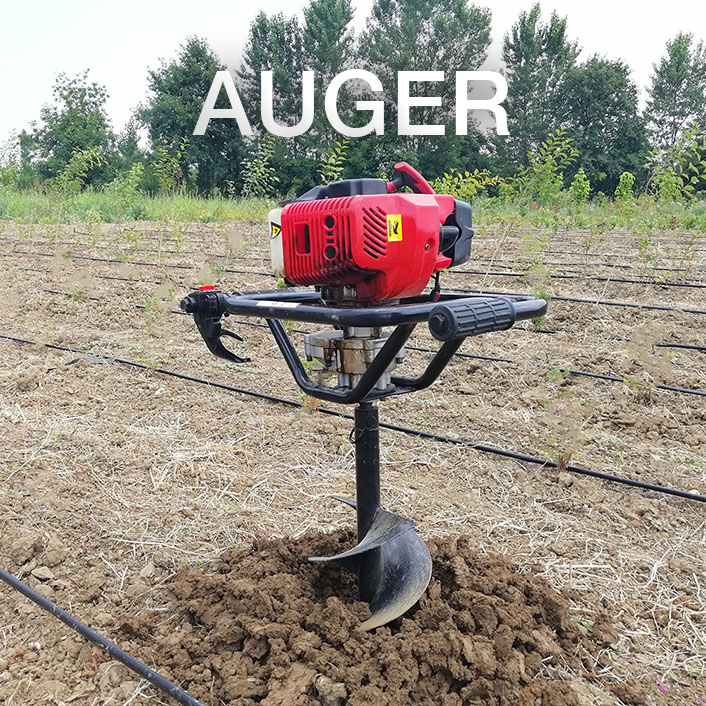
After the Trees Arrive
Storing the Trees
After receiving the trees, you should keep the roots moist until planted. Never let them dry out. It is best to plant them on the same day of receiving them. If for some reason you need to delay planting the trees by a couple of days or longer, you need to store them properly to keep them healthy.
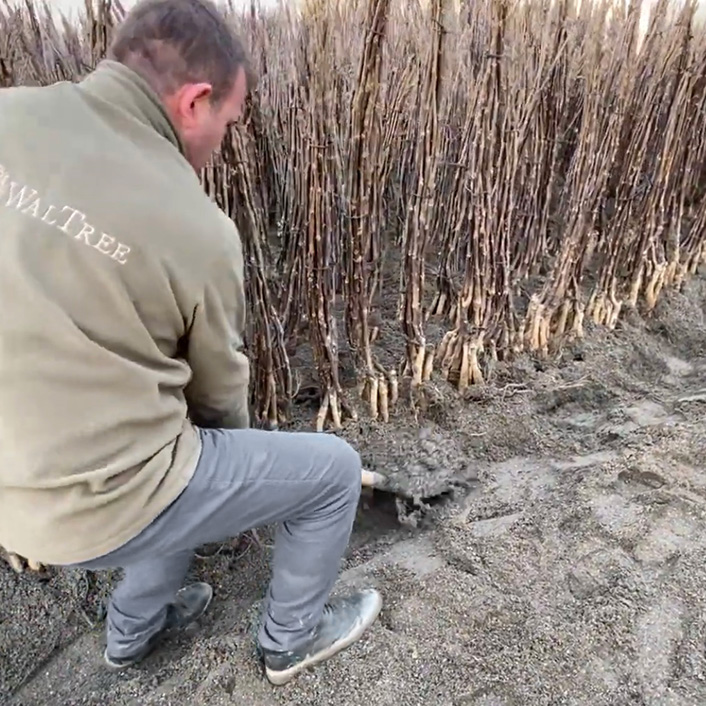
You should cover the roots temporarily in sand or soil. Water the sand/soil to keep it moist. If you give water once every 3-5 days, it should be enough. Keeping the trees in a building would be the best. Alternatively, you can keep them outside, but make sure to put them in the shade (don’t leave the trees under the sun). If you follow this procedure, you can store the trees for several weeks.
Planting the trees
For this step you will need a shovel, pruning knife and water. Before placing the tree in the hole, look at the roots of the tree. If you see any dead or broken roots, cut them with the pruning knife.
Don’t add any fertilizers, manure or any other chemicals into the hole, otherwise, you risk damaging the roots. Walnut trees don’t need any fertilizers during planting.
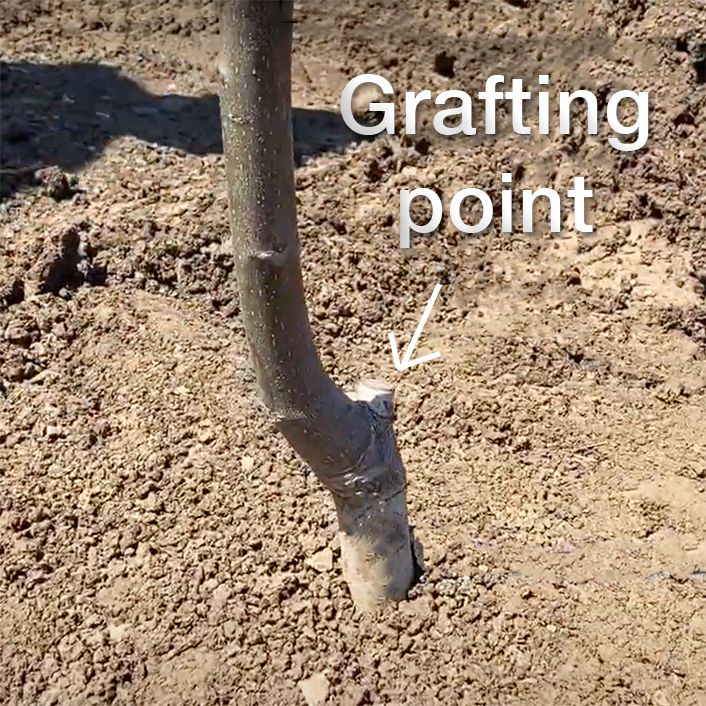
Place the tree’s roots into the hole and spread the roots evenly. It is very important for the grafting point to remain above the soil after planting. Otherwise, the tree would possibly rot and it may not be successful. Make sure to check this when you put the tree in the hole. If the hole is too deep, consider adding more soil to the bottom of the hole.
Now we are ready to bury the roots. While burying make sure to keep the tree straight with one hand. After adding some soil, press on the soil with your hands or feet to prevent any air pockets. After you’ve finished planting the sapling, you shouldn’t be able to remove it from the ground easily when you pull it. If there are weeds in the bottom and around the walnut seedlings, they should be cleared/taken out.
Watering the trees
Now that we have planted our tree, we need to give 5 to 10 litres of water. Water moistens the roots and helps the tree settle into its new place. If you are planting the tree during the winter months, the soil should be shaped so that it prevents rainwater from accumulating at the bottom of the tree.
After giving the trees this first water, don't water them again until they start leafing. When the trees are dormant they don't do photosynthesis and they don't consume water. Moreover, watering during this time can fill the oxygen pockets in the soil and suffocate the tree. For this reason, follow this very important and simple rule: no leaf = no water.
Pruning the trees
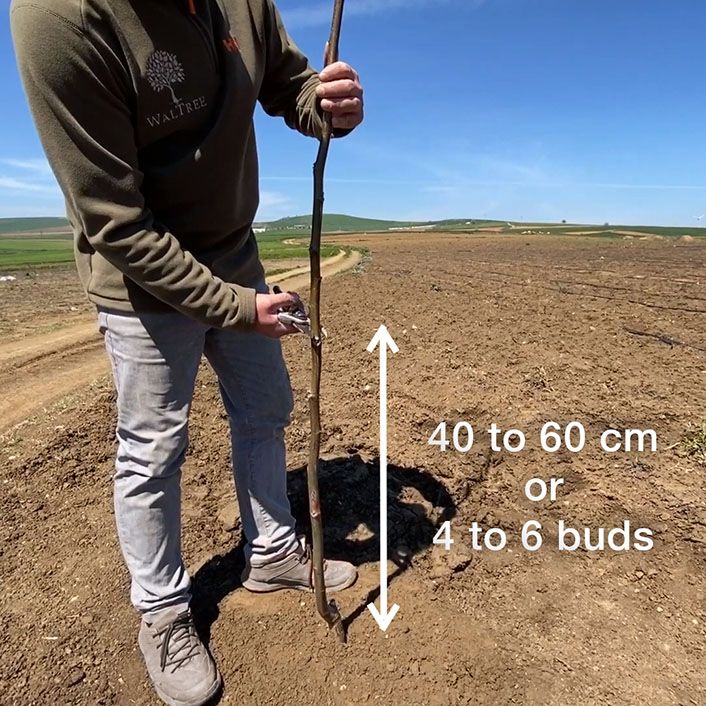
The final step is to prune the sapling. When the trees are being transplanted, they lose some of their roots. Pruning at planting helps us balance the top of the tree with its roots. You need to cut the tree at four to six buds above the grafting point. Usually 40 to 60 centimetres above the ground (at knee level). When you’re cutting the sapling, make sure you cut it with an angle. Don’t cut it straight. After cutting, you can apply a water holding salve to the top of the tree to prevent bleeding (this is optional).
Pruning is very important and you should never skip this step! Otherwise, the top of your trees can dry out in time.
Next Steps
Preventing sunburn
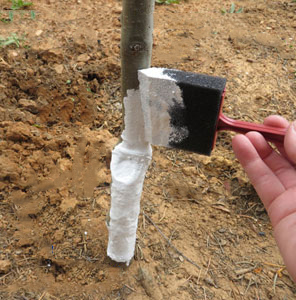
In areas where the summers are very hot, you can paint the tree white to prevent sunburn. Mix white latex paint 1:1 with water. Don’t use oil-based paint, as this might harm the tree. Paint the whole body of the tree with this paint.
Staking
If your land is in a very windy area, you can consider tying the trees to stakes. This can keep them straight and prevent the wind from breaking the tree. If there aren’t extreme winds in your area, staking is not necessary.
While placing the stakes, direction of the prevailing wind should be taken into account and stake should be placed on the opposite side of the wind. There should be a minimum of 20 centimetres of space between the tree and the stake. For the tying material, soft material should be used such as cotton thread or elastic thread.
Mulching
In areas with hot and dry summers, or in places where there is a water problem, it would be beneficial to use “mulch” to prevent water loss after planting.
Watch our instruction video
In this video, we show you how to perform all the necessary steps necessary to plant walnut trees.
WALNUT TREE PRICES
Fill out a quick form and we can send you a price list in 24 hours.